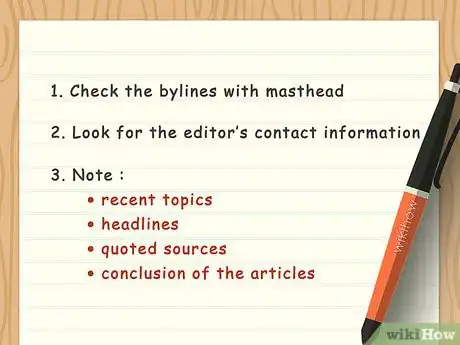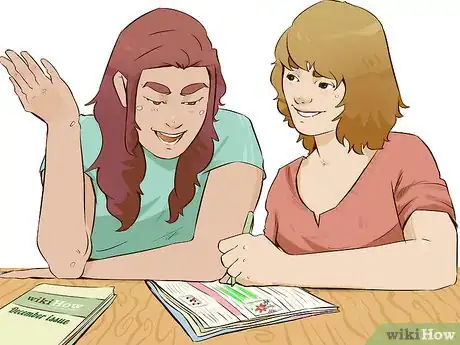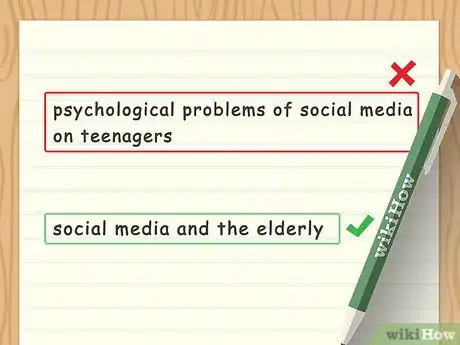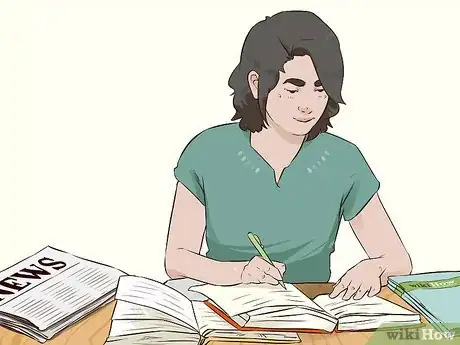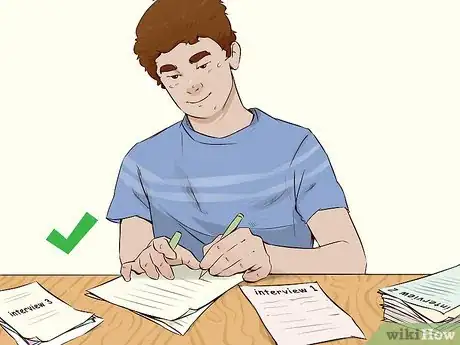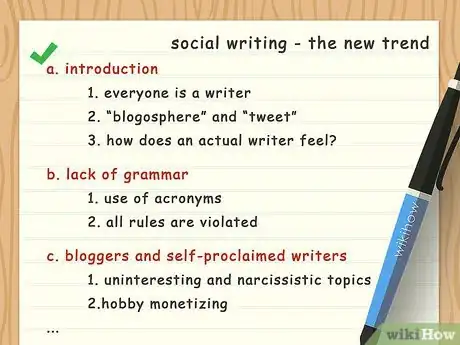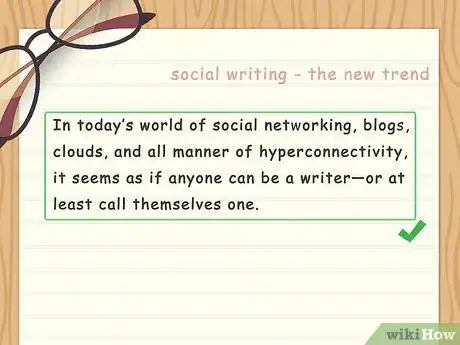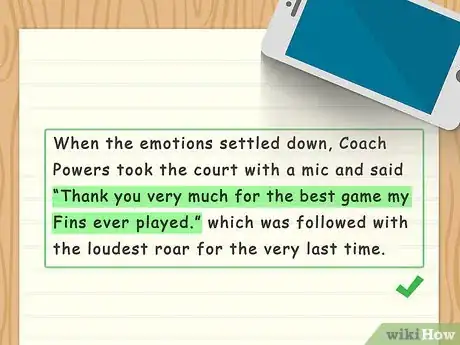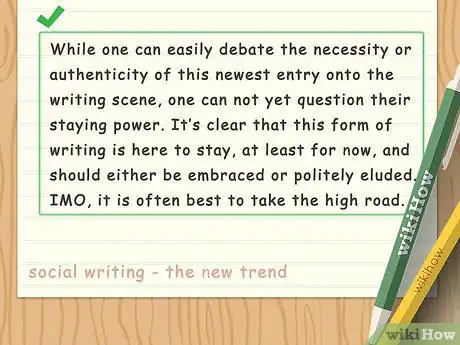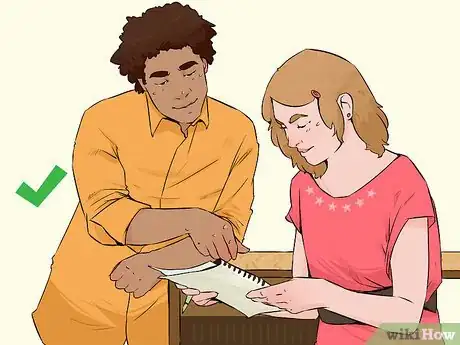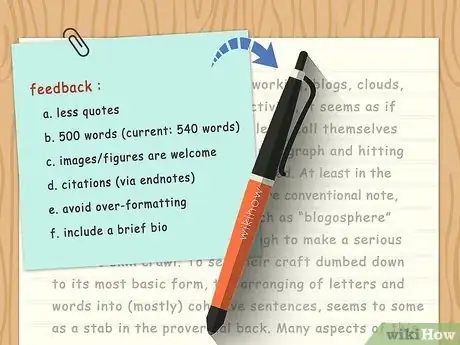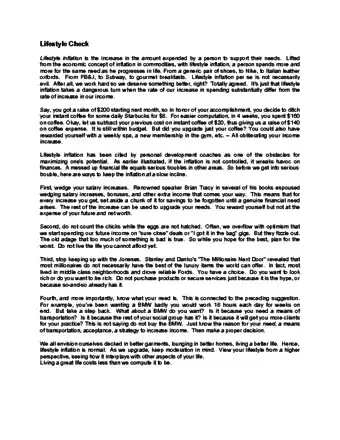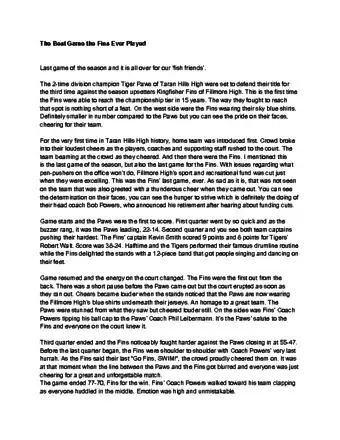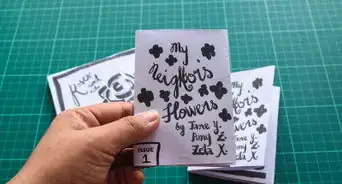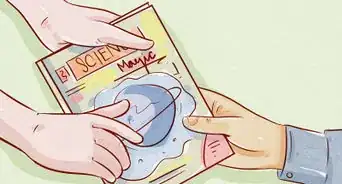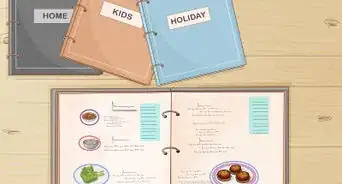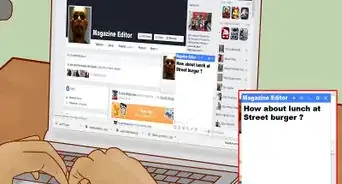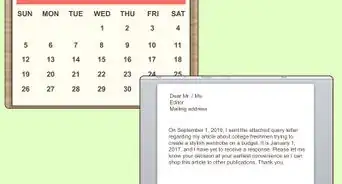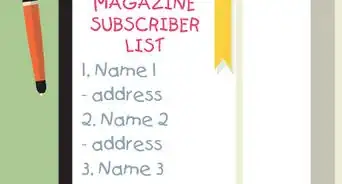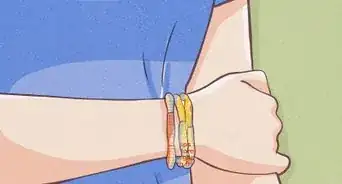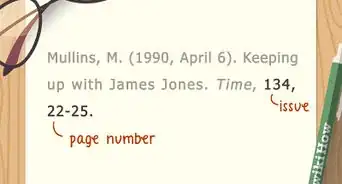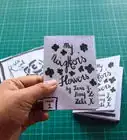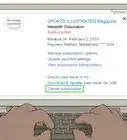This article was co-authored by Gerald Posner. Gerald Posner is an Author & Journalist based in Miami, Florida. With over 35 years of experience, he specializes in investigative journalism, nonfiction books, and editorials. He holds a law degree from UC College of the Law, San Francisco, and a BA in Political Science from the University of California-Berkeley. He’s the author of thirteen books, including several New York Times bestsellers, the winner of the Florida Book Award for General Nonfiction, and has been a finalist for the Pulitzer Prize in History. He was also shortlisted for the Best Business Book of 2020 by the Society for Advancing Business Editing and Writing.
There are 7 references cited in this article, which can be found at the bottom of the page.
wikiHow marks an article as reader-approved once it receives enough positive feedback. This article has 12 testimonials from our readers, earning it our reader-approved status.
This article has been viewed 916,184 times.
Magazine articles can be a big boost for seasoned freelance writers or writers who are trying to jump-start their writing careers. In fact, there are no clear qualifications required for writing magazine articles except for a strong writing voice, a passion for research, and the ability to target your article pitches to the right publications. Though it may seem like magazines may be fading in the digital age, national magazines continue to thrive and can pay their writers $1 a word.[1] To write a good magazine article, you should focus on generating strong article ideas and crafting and revising the article with high attention to detail.
Steps
Generating Article Ideas
-
1Analyze publications you enjoy reading. Consider magazines you have a subscription to or enjoy reading regularly. You may also focus on publications you know little about but would like to start contributing articles to. Read at least three to four recent issues of the publications, with a close eye on several aspects:
- Check if the bylines match the names on the masthead. If the names on the bylines do not match the masthead names, this may be an indication that the publication hires freelance writers to contribute to its issues.
- Look for the names and contact information of editors for specific areas. If you’re interested in writing about pop culture, identify the name and contact information of the arts editor. If you’re more interested in writing about current events, look for the name and contact information of the managing editor or the features editor. You should avoid contacting the executive editor or the editor-in-chief as they are too high up the chain and you will likely not interact with them as a freelance writer.
- Note recent topics or issues covered in the publication and the angle or spin on the topics. Does the publication seem to go for more controversial takes on a topic or a more objective approach? Does the publication seem open to experimentation in form and content or are they more traditional?
- Look at the headlines used by the publication and how the articles begin. Note if the headlines are shocking or vague. Check if the articles start with a quote, a statistic, or an anecdote. This will give you a good sense of the writing style that gets published in that particular publication.
- Note the types of sources quoted in the articles. Are they academic or more laymen? Are there many sources quoted, or many different types of sources quoted?
- Pay attention to how writers wrap up their articles in the publication. Do they end on a poignant quote? An interesting image? Or do they have a bold, concluding thought?
-
2Consider recent trends or topics you talked about with a friend or peer. If you’ve had a good conversation about a trend, topic, or issue with a friend recently, think about how you may be able to take this conversation and turn it into a story idea. Maybe your friend was discussing a new trend on social media or how racism is a problem at her daughter’s school. Focus on conversations that were full of passion or strong emotion and that relate to a current issue or trend.[2]
- These inspiring conversations do not need to be about global problems or a large issue. Having conversations with your neighbors, your friends, and your peers can allow you to discuss local topics that could then turn into an article idea for a local magazine.
Advertisement -
3Look up upcoming events in your area. If you are thinking of writing a magazine article for a local publication, you should look through local event listings for any events that may be newsworthy. This could be a local protest, restaurant openings, local plays, or local music festivals. Starting small with local publications before you branch out to national publications could help you get started as a magazine writer, especially if you are just starting your writing career.[3]
- You should also look through your local newspaper for human interest stories that may have national relevance. You could then take the local story and pitch it to a magazine. You may come across a local story that feels incomplete or full of unanswered questions. This could then act as a story idea for a magazine article.
-
4Consider what other writers are publishing. You should have a good sense of what other writers are currently writing about or posting on social media. This way, you will not miss any current ideas or trends and may be able to put a different spin on an existing article.[4]
- You can also set your Google alerts to notify you if keywords on topics of interest appear online. If you have Twitter or Instagram, you can use the hashtag option to search trending topics or issues that you can turn into article ideas.
-
5Think of a new angle on a familiar topic. Perhaps you are interested in a topic that has been written to death in many different publications, but you can’t stop thinking about the topic. Look for a new angle on the topic so it feels fresh, relevant, and new. This will make your magazine article stand out to editors and engage your target audience.[5]
- For example, rather than write about the psychological problems of social media on teenagers, which has been done many times in many different magazines, perhaps you can focus on a demographic that is not often discussed about social media: seniors and the elderly. This will give you a fresh approach to the topic and ensure your article is not just regurgitating a familiar angle.
Crafting the Article
-
1Research your article idea using sources like books and published texts. One of the key elements of a good magazine article is good research. Take the time to locate good sources and read any necessary supplementary material to help you get a better sense of the article idea. Read through research material like articles, books, videos, and social media posts. Good quotes from sources can often make or break your credibility as a writer and lead to a stronger article.[6]
- Look for content written by experts in the field that relates to your article idea. If you are doing a magazine article on dying bee populations in California, for example, you should try to read texts written by at least two bee experts and/or a beekeeper who studies bee populations in California.
- You should ensure any texts you use as part of your research are credible and accurate. Be wary of websites online that contain lots of advertisements or those that are not affiliated with a professionally recognized association or field of study. Make sure you check if any of the claims made by an author have been disputed by other experts in the field or have been challenged by other experts. Try to present a well-rounded approach to your research so you do not appear biased or slanted in your research.
-
2Locate individuals who could be good sources. Think about individuals who may have interesting things to say about your topic and who can offer an expert opinion on your topic. You may also want to use consumers or clients as sources, depending on your topic. Do not be afraid to get on the phone and start calling people for interviews. Most people like to talk about themselves or about a topic they enjoy and are well versed in. You can also steal sources from other articles, as there is no rule against this if the sources are named in the article.[7]
- You can also do an online search for individuals who may serve as good expert sources based in your area. If you need a legal source, you may ask other freelance writers who they use or ask for a contact at a police station or in the legal system.
-
3Interview your sources. Once you get your sources to agree to sit down face to face for an interview, you will need to interview them to build trust and rapport but also getting good quotes you can use in the article. You can conduct the interviews over the phone or via video chat, but in-person interviews are usually the most successful. Use a tape recorder and take notes during the interview, as recorders can fail.[8]
- Prepare a list of questions before the interview. Research the source’s background and level of expertise. Be specific in your questions, as interviewees usually like to see that you have done previous research and are aware of the source’s background.
- Ask open-ended questions, avoid yes or no questions. For example, rather than asking, "Did you witness the test trials of this drug?" You can present an open-ended question, "What can you tell me about the test trials of this drug?" Be an active listener and try to minimize the amount of talking you do during the interview. The interview should be about the subject, not about you.
- Make sure you end the interview with the question: “Is there anything I haven’t asked you about this topic that I should know about?” You can also ask for referrals to other sources by asking, “Who disagrees with you on your stance on this issue?” and “Who else should I talk to about this issue?”
- Don’t be afraid to contact the source with follow-up questions as your research continues. As well, if you have any controversial or possibly offensive questions to ask the subject, save them for last.
-
4Transcribe your interviews. Most editors will require you to transcribe all interviews in full in a word processing document and have it available in the event a source needs to be confirmed or a quote needs to be checked. Your magazine article will be fact-checked by the magazine's fact-checking team before it is sent to print and the fact-checkers may require your transcribed interviews as a way to confirm quotes and sources.
- The best way to transcribe your interviews is to sit down with headphones plugged into your tape recorder and set aside a few hours to type out the interviews. There is no short and quick way to transcribe unless you decide to use a transcription service, which will charge you a fee for transcribing your interviews.
-
5Create an article outline. Before you dive into writing the article, you should set aside some time to create an outline. Read over your research, including your interview notes. Highlight any good quotes from your sources and key pieces of information from your research. You can then lean on these to create the article outline.[9]
- Your outline should include the main point or angle of the article in the introduction, followed by supporting points in the article body, and a restatement or further development of your main point or angle in your conclusion section.
- The structure of your article will depend on the type of article you are writing. If you are writing an article on an interview with a noteworthy individual, your outline may be more straightforward and begin with the start of the interview and move to the end of the interview. But if you are writing an investigative report, you may start with the most relevant statements or statements that relate to recent news and work backward to the least relevant or more big picture statements.[10]
- Keep in mind the word count of the article, as specified by your editor. You should keep the first draft within the word count or just above the word count so you do not lose track of your main point. Most editors will be clear about the required word count of the article and will expect you not to go over the word count, for example, 500 words for smaller articles and 2,000-3,000 words for a feature article. Most magazines prefer short and sweet over long and overly detailed, with a maximum of 12 pages, including graphics and images.[11]
- You should also decide if you are going to include images or graphics in the article and where these graphics are going to come from. You may contribute your own photography or the publication may provide a photographer. If you are using graphics, you may need to have a graphic designer re create existing graphics or get permission to use the existing graphics.
-
6Use a hook first line. A strong magazine article will draw a reader in and hook them from the first line. In fact, the lead paragraph of your article is considered the most important paragraph in your entire article. You can generate a hook first line to engage and inspire your readers in several different ways:[12]
- Use an interesting or surprising example: This could be a personal experience that relates to the article topic or a key moment in an interview with a source that relates to the article topic. For example, you may start an article on beekeeping in California by using a discussion you had with a source: "Darryl Bernhardt never thought he would end up becoming the foremost expert on beekeeping in California."
- Try a provocative quotation: This could be from a source from your research that raises interesting questions or introduces your angle on the topic. For example, you may quote a source who has a surprising stance on bee populations: "'Bees are more confused than ever,' Darryl Bernhart, the foremost expert in bees in California, tells me."
- Use a vivid anecdote: An anecdote is a short story that carries moral or symbolic weight. Think of an anecdote that might be a poetic or powerful way to open your article. For example, you may relate a short story about coming across abandoned bee hives in California with one of your sources, an expert in bee populations in California.
- Come up with a thought provoking question: Think of a question that will get your reader thinking and engaged in your topic, or that may surprise them. For example, for an article on beekeeping you may start with the question: "What if all the bees in California disappeared one day?"
-
7Weave in quotes from experts or reliable sources. You should tailor the article’s language and tone to the target audience of the magazine and use the writing style of previously published articles in the publication as a guide. Make sure you weave in relevant and strong quotes from your sources, such as an expert source or a quote from another text.[13]
- You want to avoid leaning too much on quotations to write the article for you. A good rule of thumb is to expand on a quotation once you use it and only use quotations when they feel necessary and impactful. The quotations should support the main angle of your article and back up any claims being made in the article.
-
8End on a strong concluding statement that illuminates or expands on your article topic. You should try to end your first draft with a concluding statement that leaves the reader satisfied but also curious about further developments on the topic. Go for an ending that leaves the reader asking, “what next?” and do not try to answer all the questions raised by your article topic. Instead, look for ways to wrap up the article in an interesting, open ended way.
- You may want to lean on a strong quote from a source that feels like it points to future developments relating to the topic or the ongoing nature of the topic. Ending the article on a quote may also give the article more credibility, as you are allowing your sources to provide context for the reader.
Revising the Article
-
1Discuss the article with your editor. Once you feel you have a solid first draft, you should contact the editor of the publication that has accepted your pitch and send her the draft. Ask her to give you feedback on specific sections of the article and to tell you if you are clearly defining the overall angle of the article.[14]
- Having a conversation about the article with your editor can offer you a set of professional eyes who can make sure the article fits within the writing style of the publication and reaches its best possible draft. You should be open to editor feedback and work with your editor to improve the draft of the article.
-
2Apply editor and peer feedback to the article. You may also want to give the article to a peer, such as a fellow writer, to get feedback from them as well, especially if you are struggling with a particular section or line in the article. Applying feedback from your editor and your peers can help your article reach its strongest draft in terms of content, flow, structure, and tone.[15]
- You should also get a copy of the publication’s style sheet or contributors guidelines and make sure the article follows these rules and guidelines. Your article should adhere to these guidelines to ensure it is ready for publication by your deadline.
-
3Revise the article for flow and structure. A good magazine article will flow well, with good transitions between paragraphs and good sentence structure. Try reading the article out loud to yourself or a sympathetic audience. Note if any of the sentence structure sounds awkward or wordy. Be willing to removing or reworking large chunks of text so that the article flows and you have strong sentence structure throughout the article.
-
4Turn in the revised article by the deadline. Make sure you hit your deadline and turn in the article on time, especially if you are turning in your first article for the publication. If possible, turn the article in early to impress the editor and show you can meet deadlines for future articles for the publication.[16]
- Most publications accept electronic submissions of articles. Talk with your editor to determine the best way to submit the revised article.
Sample Articles
Expert Q&A
-
QuestionHow do you check your research sources?
 Gerald PosnerGerald Posner is an Author & Journalist based in Miami, Florida. With over 35 years of experience, he specializes in investigative journalism, nonfiction books, and editorials. He holds a law degree from UC College of the Law, San Francisco, and a BA in Political Science from the University of California-Berkeley. He’s the author of thirteen books, including several New York Times bestsellers, the winner of the Florida Book Award for General Nonfiction, and has been a finalist for the Pulitzer Prize in History. He was also shortlisted for the Best Business Book of 2020 by the Society for Advancing Business Editing and Writing.
Gerald PosnerGerald Posner is an Author & Journalist based in Miami, Florida. With over 35 years of experience, he specializes in investigative journalism, nonfiction books, and editorials. He holds a law degree from UC College of the Law, San Francisco, and a BA in Political Science from the University of California-Berkeley. He’s the author of thirteen books, including several New York Times bestsellers, the winner of the Florida Book Award for General Nonfiction, and has been a finalist for the Pulitzer Prize in History. He was also shortlisted for the Best Business Book of 2020 by the Society for Advancing Business Editing and Writing.
Author & Journalist Search the information on Google to see if pops up anywhere else. Let's say that it doesn't—if the info is unique to one source, do a little background research to find out more about it. Do they have their own bias? Are they right- or left-leaning? If possible, try to independently confirm the information, too.
Search the information on Google to see if pops up anywhere else. Let's say that it doesn't—if the info is unique to one source, do a little background research to find out more about it. Do they have their own bias? Are they right- or left-leaning? If possible, try to independently confirm the information, too. -
QuestionIs there an address to send to after writing an article?
 Community AnswerDepending on the magazine you wish to submit to, you should look inside the front cover, or near the beginning, and locate the information about the magazine's editor and staff. Normally you will find an address, an email, or a website that will direct you to their submission guidelines and acceptance of submissions.
Community AnswerDepending on the magazine you wish to submit to, you should look inside the front cover, or near the beginning, and locate the information about the magazine's editor and staff. Normally you will find an address, an email, or a website that will direct you to their submission guidelines and acceptance of submissions. -
QuestionHow can I find an argument that I feel strongly about to write an article?
 Community AnswerWrite about something that makes you mad. Research the topic if you can and talk to other people about their opinions.
Community AnswerWrite about something that makes you mad. Research the topic if you can and talk to other people about their opinions.
Expert Interview

Thanks for reading our article! If you'd like to learn more about writing an article, check out our in-depth interview with Gerald Posner.
References
- ↑ http://grammar.yourdictionary.com/grammar-rules-and-tips/tips-on-writing-a-good-feature-for-magazines.html
- ↑ https://www.writersdigest.com/writing-articles/20-ways-to-generate-article-ideas-in-20-minutes-or-less
- ↑ https://www.writersdigest.com/writing-articles/20-ways-to-generate-article-ideas-in-20-minutes-or-less
- ↑ https://www.writersdigest.com/writing-articles/20-ways-to-generate-article-ideas-in-20-minutes-or-less
- ↑ https://www.writersdigest.com/writing-articles/20-ways-to-generate-article-ideas-in-20-minutes-or-less
- ↑ http://www.writerswrite.com/journal/jun03/eight-tips-for-getting-published-in-magazines-6036
- ↑ http://www.thepenmagazine.net/20-steps-to-write-a-good-article/
- ↑ http://grammar.yourdictionary.com/grammar-rules-and-tips/tips-on-writing-a-good-feature-for-magazines.html
- ↑ https://www.youtube.com/watch?v=0R5f2VV58pw
- ↑ http://www.writersdigest.com/tip-of-the-day/how-many-different-kinds-of-articles-are-there
- ↑ http://libguides.unf.edu/c.php?g=177086&p=1163719
- ↑ http://www.writerswrite.com/journal/jun03/eight-tips-for-getting-published-in-magazines-6036
- ↑ http://grammar.yourdictionary.com/grammar-rules-and-tips/tips-on-writing-a-good-feature-for-magazines.html
- ↑ http://www.writerswrite.com/journal/jun03/eight-tips-for-getting-published-in-magazines-6036
- ↑ http://www.writerswrite.com/journal/jun03/eight-tips-for-getting-published-in-magazines-6036
- ↑ http://grammar.yourdictionary.com/grammar-rules-and-tips/tips-on-writing-a-good-feature-for-magazines.html
About This Article
To write a magazine article, start by researching your topic and interviewing experts in the field. Next, create an outline of the main points you want to cover so you don’t go off topic. Then, start the article with a hook that will grab the reader’s attention and keep them reading. As you write, incorporate quotes from your research, but be careful to stick to your editor’s word count, such as 500 words for a small article or 2,000 words for a feature. Finally, conclude with a statement that expands on your topic, but leaves the reader wanting to learn more. For tips on how to smoothly navigate the revision process with an editor, read on!
